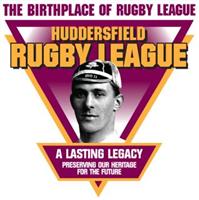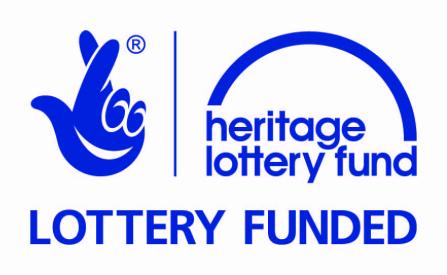HUDDERSFIELD & DISTRICT AMATEUR RUGBY LEAGUE
Sincere thanks to David Gronow for permission to publish the following article and photographs.
Just over 100 years ago, and fifteen after the historic 'split' to the Northern Union in 1895, the Huddersfield & District ARL was formed, albeit junior clubs were prevalent in surrounding areas prior to the breakaway.
It was on 27 April 1908 that the inaugural meeting was held in the Pavilion at Fartown, home of the Huddersfield Cricket and Athletic Club.
During the following month, the constitution of the League was fixed, officials were appointed and thirty-two clubs intimated their intention to run teams.
At a meeting late in September, however, there were entries from only twenty-one teams.
Twelve clubs formed the junior division (over 18) with the intermediates (under 18) made up from the remaining sides.
Mr. W. Fillan was elected President, Mr. H. G. Roebuck and Mr. E. Kaye were Secretary and Treasurer respectively, and Messrs J. Clifford, V. Wood, W. Teal and A. E. Hartley were elected to the committee, Mr. J. Hall was appointed Assistant Secretary.
In conjunction with the Holliday Challenge Cup, first played for in 1885, two trophies competed for annually - the Sir Charles Sykes Rose Bowl and the Sam Wood Cup - were presented to the League in this first term.
Sir Charles Sykes was at the time President and Mr. Sam Wood a Vice-President of Huddersfield Cricket and Athletic Club, whose ground staged several curtain-raiser games provided by District League sides.
The Rose Bowl was competed for in the Junior Division - Underbank Rangers who finished champions were the first holders of the trophy, they also won the Holliday Cup by defeating Paddock 6-2 at Fartown on 12 April 1909.
Hillhouse took the Sam Wood Cup as champions of the Intermediate section.
At this period, clubs were strongly urged to cater for young players, and eventually it was decided that no player over twenty years of age would be allowed to play junior or intermediate league football in the 1909-10 season.
Accordingly, the League was split into two sections - Under 21 and Under 18.
Up to the outbreak of the 1914-18 First World War, the number of competing teams in the League was usually around twenty.
Grimescar, Golcar, Holmbridge and Marsh supplied sides in the periond 1911 to 1913 - Grimescar were winners of the Under 18 cup in 1912 beating High Street 18-12 in the final.
Because of the war the League suffered badly, many clubs dropping out, but among the teams to function were Outlane, Kirkheaton and Holmbridge.
Holmbridge reached the final of the Junior League championship which was played at Fartown on 24 April 1915, their opponents, Rastrick, ending up winners by 53-3.
At the end of hostilities in 1918, the League began to recover.
In the early 1920's there were twenty-five teams split into groups which this time accommodated all ages - open age, under 20, under 18 and under 16.
In addition to the founder members, in 1923-24 clubs from Flockton, Lindley, Linthwaite, Meltham, Hillhouse and Birkby, Shorehead, Marsden, Slaithwaite, Crosland Moor, Scapegoat Hill, Cowcliffe St Mark's, Almondbury, St Joseph's, Milnsbridge and the Central Lads' Club were also competing.
Teams from St Patrick's and Leymoor joined the Intermediate section in 1925-26.
It is noted that an open-age game at Rastrick during March of the same season - Lindley were the visitors - realised gate receipts of £26.
The black and white hoops of Lindley Swifts became renowned in amateur rugby circles reaching the first round of the Challenge Cup losing 32pts-2 to St Helens in 1928-29, and took on, and almost beat, Rochdale Hornets two years later.
The Hornets won 13-2 in the first round, with the Swifts putting up a great performance.
Despite an increase in intermediate sides, the number of teams had decreased by 1930, the open-age section had been replaced by Under 21 football - Lindley opting to play in the Leeds & Districts League.
The Under 21 sides were 5th Dukes, Slaithwaite, Netherton, Honley, Underbank, Meltham, Paddock, Rastrick, Leeds Road, Moldgreen and Hillhouse and Birkby.
Leeds Road met Hillhouse and Birkby in the Holliday Cup final, both teams also engaged in the championship semi-finals - Leeds Road defeating Rastrick and going on to beat Netherton 15-0 in the final.
Honley and Technical College came to the fore in season 1934-35, and with the revival of the open-age section in 1937, Lindley came back into the fold along with teams from Saddleworth, Meltham, Hillhouse and Birkby, Slaithwaite and Underbank.
Lindley finished champions, beating Saddleworth 15-0 in the final.
Rastrick were Intermediate champions defeating Underbank 15-7.
The previous season, 1936-37, had gained five clubs in the newly-formed Under 17 section - Flockton, Meltham, Armitage Bridge, Netherton and Underbank.
An interesting point to note is that from 1930 to 1939 the District League supplied no fewer than forty-six players to the Huddersfield club, thirty of whom played first team football.
In 1939, twelve local players were on the parent clubs' books, six of them turning out with the first team.
As could be expected, the outbreak of the Second World War of 1939-45 brought many problems, and because of the call-up it was found impossible to reorganise the Slaithwaite club.
Underbank, too, were unable to function during the war years - probably the only period throughout the hundred years the Holmfirth club were not represented.
The Yorkshire Senior Competition took many of the players who were available, and in February 1945 the open-age section was closed.
The post-war season of 1947-48 brought an increase in the number of clubs, with open-age teams particularly to the fore - this season saw the reformation of the Lockwood and Primrose Hill clubs, as well as teams from the youth clubs.
The 1950-51 season had more teams competing than ever before, thirty-one teams split into four groups: Open-Age, Under 21, Under 18, Under 16.
The Netherton club were prominent in the fifties, as well as securing league titles they won the Holliday Challenge Cup five years out of six between seasons 1949-50 to 1954-55, the exception being Lockwood who won the cup in 1953-54.
At the end of the fifties/early sixties the Halifax-Huddersfield Joint ARL was formed combining Open Age, Under 19 and Under 17 leagues, adding the Huddersfield sides to those such as Ovenden, Siddal, Greetland and Illingworth, to name but a few.
Moldgreen had built a successful side in the early sixties, winning the Holliday Cup in 1961-62 and reaching the Final Qualifying Round of the Challenge Cup in 1962-63, before losing out to York Imperial in a game played at Widnes in an attempt to beat the cold freeze.
Until 1973 the Rugby Football League was controlled by the thirty professional clubs with the amateurs having no vote or say in their own future.
Overall, amateur rugby league was in serious decline, with fewer than 150 teams, youth rugby was down to as little as thirty sides.
Disillusioned with the way the game was being administrated and the small number of clubs taking part, a group of leading officials including Jack Clayton, Tom Keaveney and Maurice Oldroyd, all from Huddersfield - with the backing of their district leagues - met at Greenside Working Mens Club on Wakefield Road, Huddersfield, on 4 March 1973 and formed the British Amateur Rugby League Association (BARLA) - to this day still run from offices in New North Road, Huddersfield.
With a bank balance of just £25 they faced the wrath of the Rugby Football League and even some of their amateur colleagues, but eventually won the day, and with the backing of the Sports Council they were soon acknowledged as the amateur game's new governing body.
Following the formation of British Amateur Rugby League Association in 1973, local District Leagues got together and pooled their resources.
The Pennine Amateur Rugby League was formed in 1974 by a merger of Bradford, Halifax, Huddersfield, Oldham and Rochdale districts.
Underbank Rangers took all before them in the years 1975-76 to 1977-78 with Holliday Cup triumphs three seasons in a row, and were successful again achieving a promotion and cup double in 1981-82 when Neil Fox was player/coach.
Lindley Swifts, meanwhile, staged a real upset with a memorable 16-11 win over Hunslet Warriors in the 2000-01 Tetley's Bitter Yorkshire County Cup Final, played at Lionheart Stadium, Featherstone on 7 January 2001.
Since 1908, practically every area in and around Huddersfield has at one time or another been represented in the Huddersfield and District Amateur Rugby League.
Throughout the League's hundred year existence, one can always find reference to old established clubs such as Underbank Rangers, St Joseph's, Moldgreen, Lindley Swifts, Meltham and Slaithwaite…..all still featuring in the Huddersfield and District League with records to be proud of - added to these current day are Newsome Panthers and Emley Moor.




